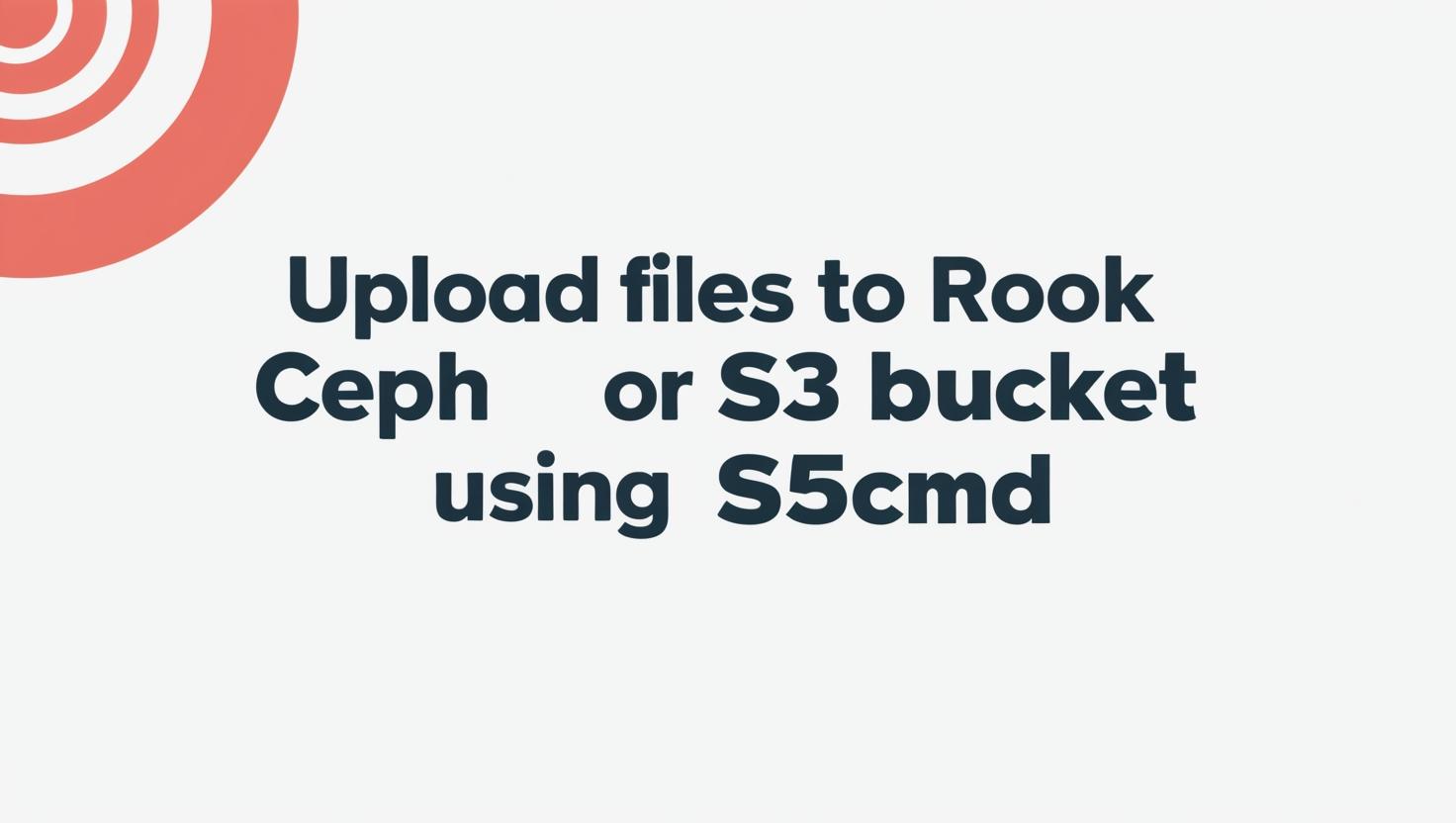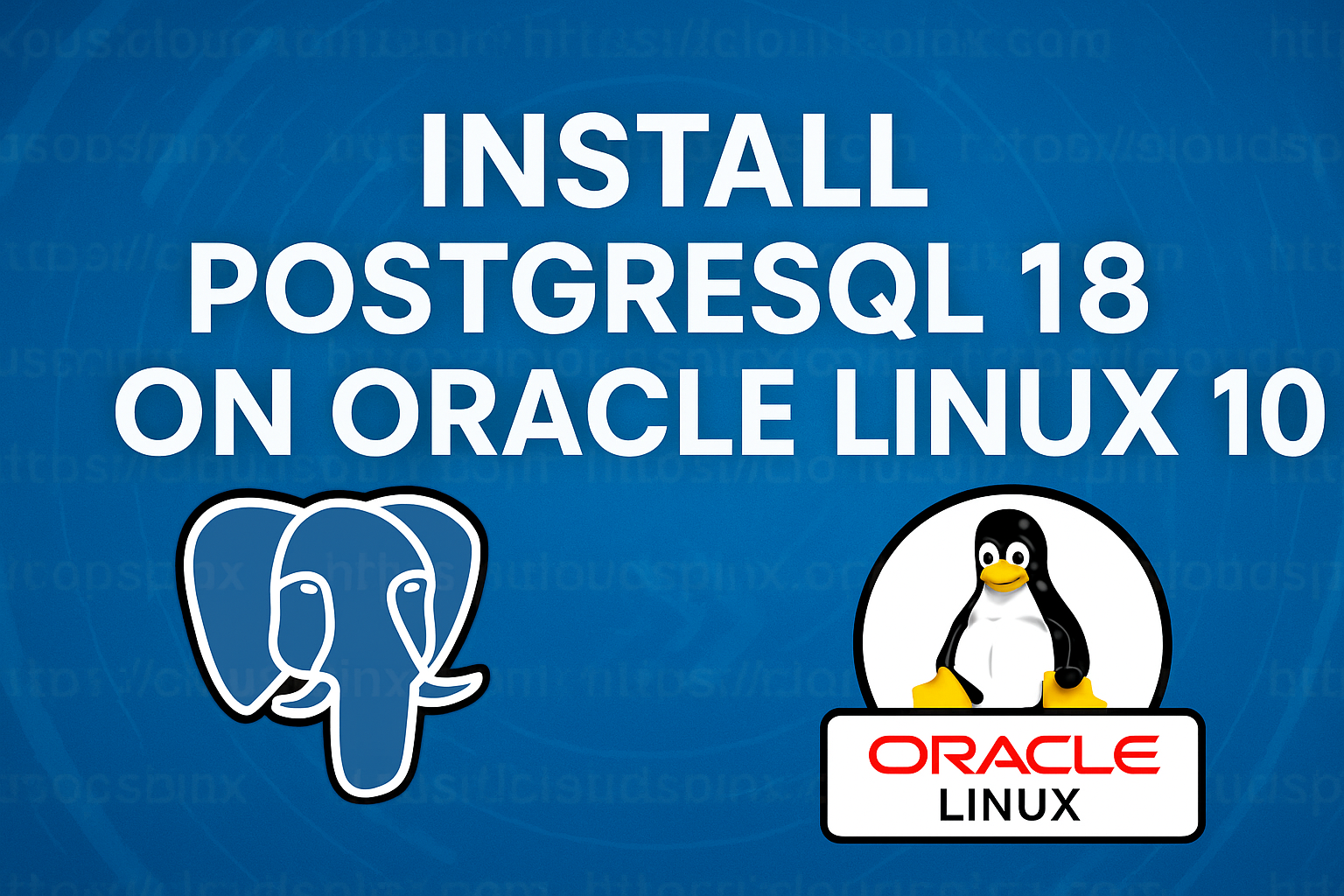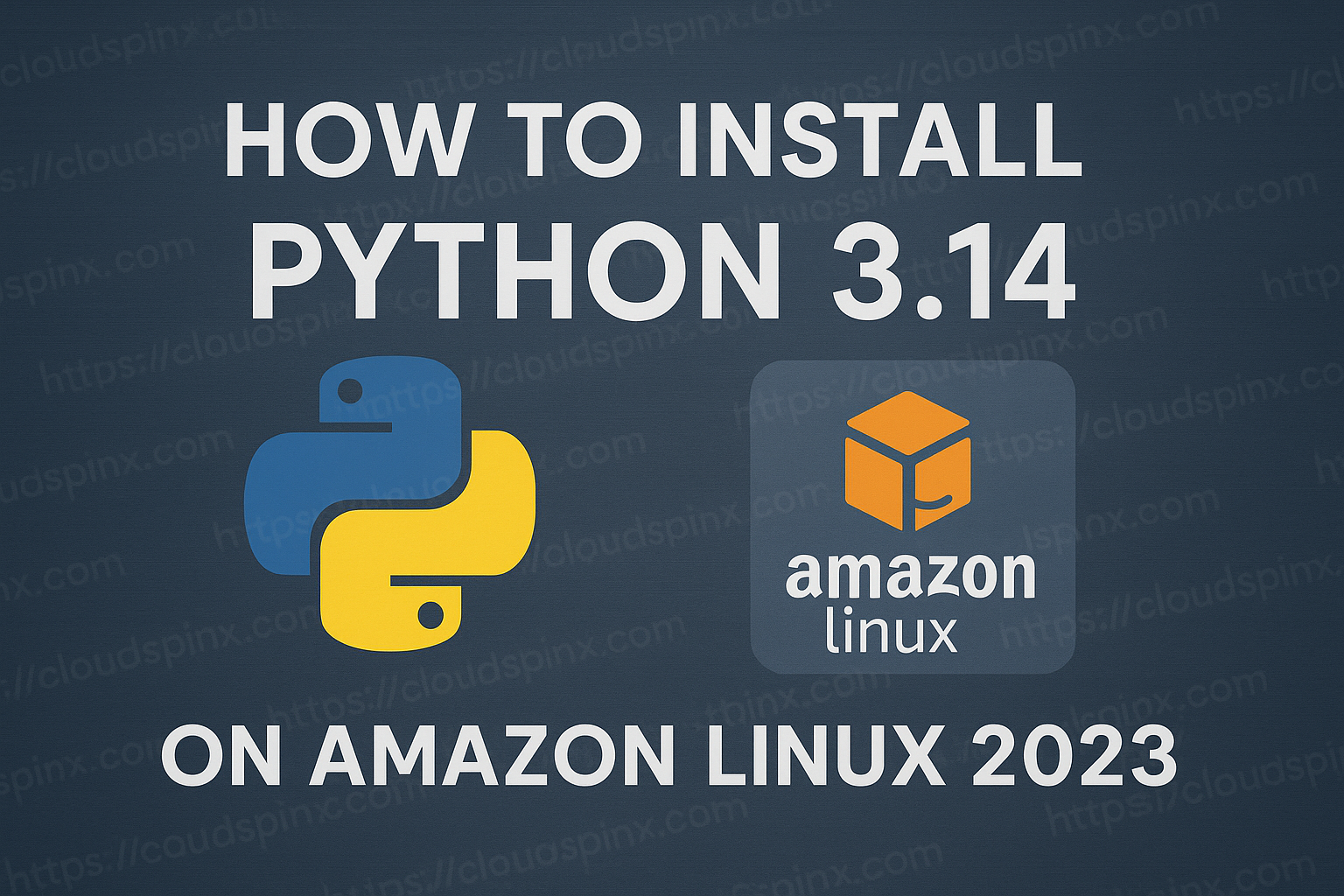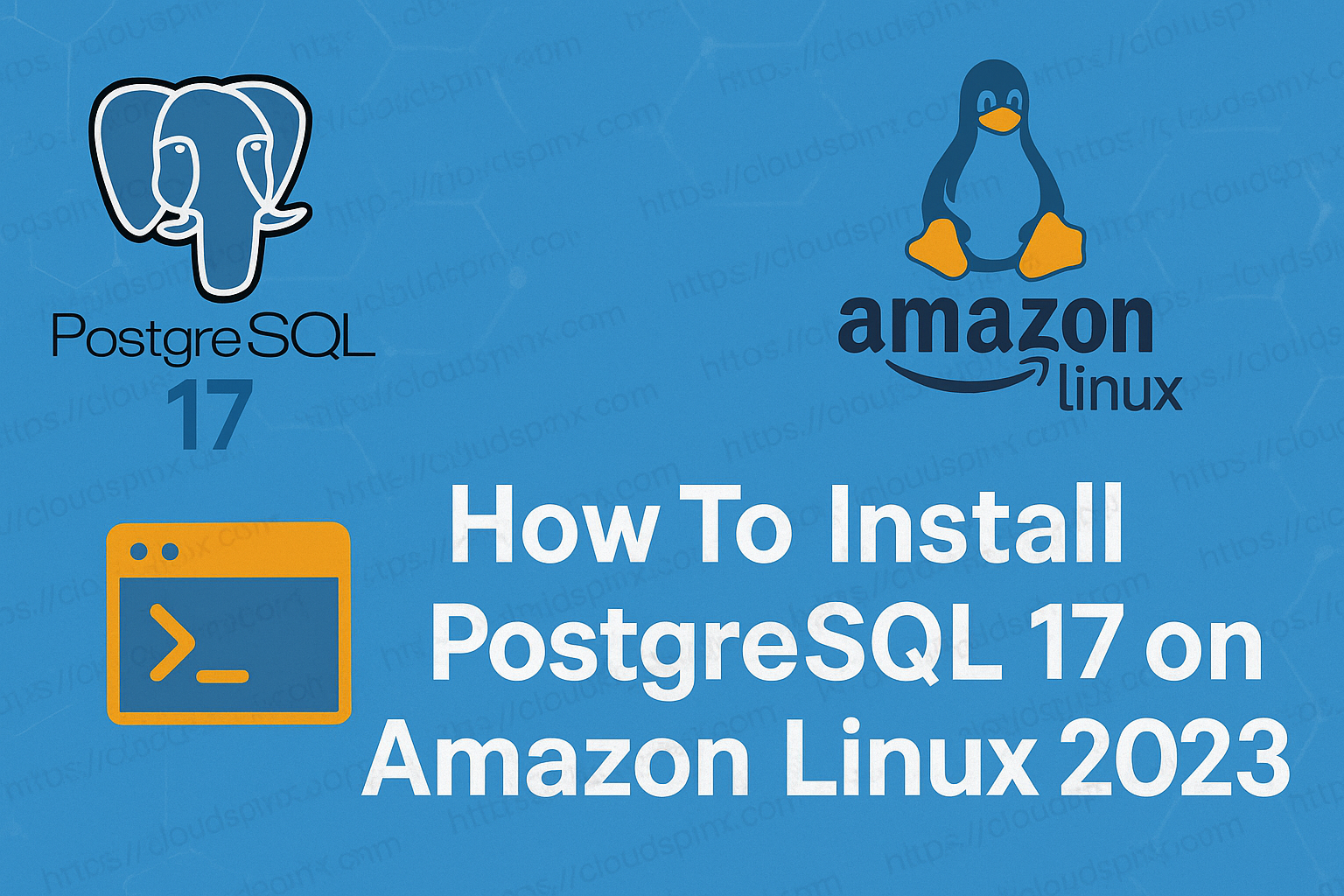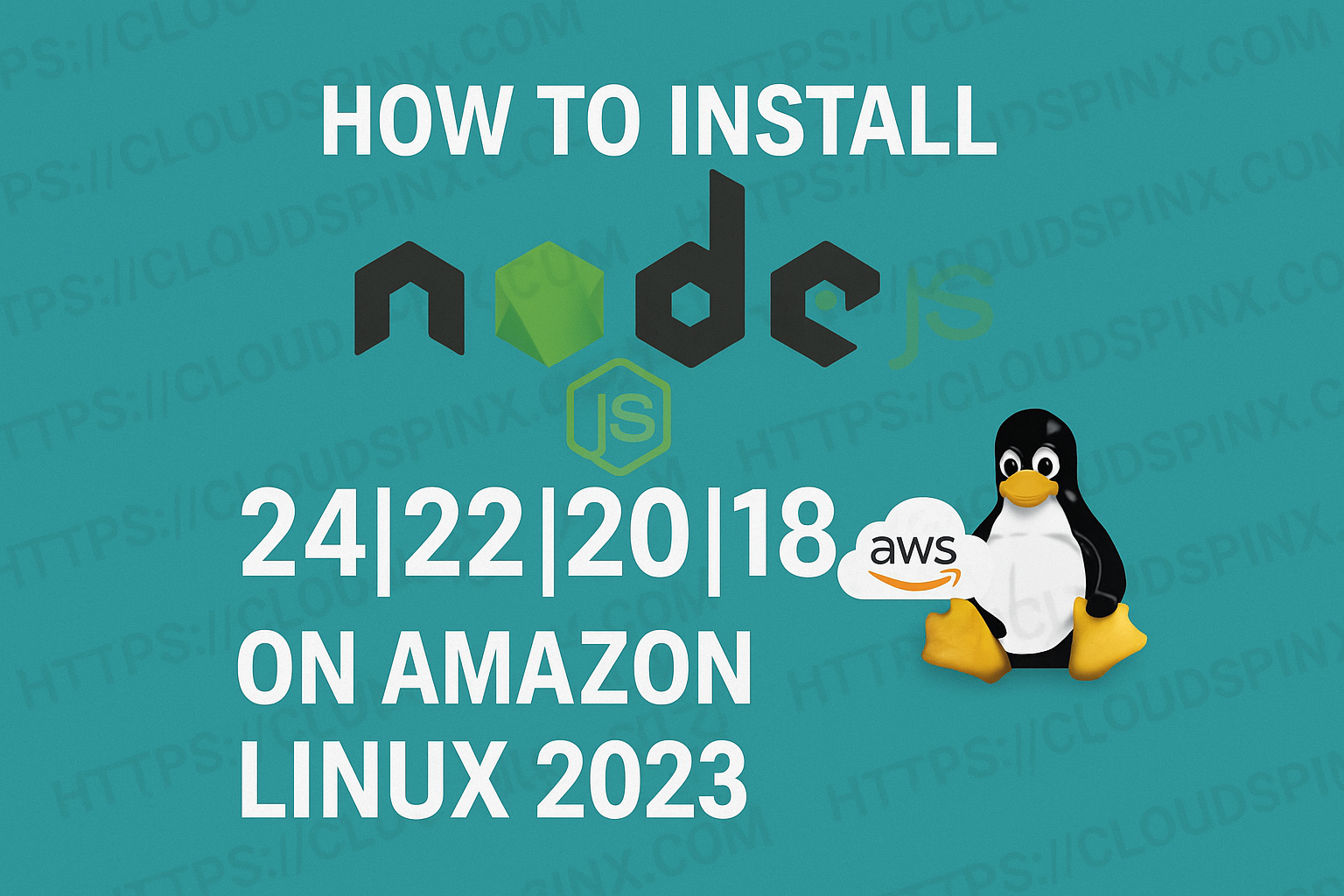s5cmd is a CLI utility used to access S3 bucket and manage files – upload, or delete objects in an S3 bucket. It is written in Go and highly optimized for speed and parallelism, while maintaining its simplicity. If you are a developer, DevOps engineer, or data scientists with a need to manage large-scale S3 operations – s5cmd this is an ideal tool for you. Alternative tools to s5cmd include s3cmd and aws-cli, but neither is optimized for high performance.
Features of s5cmd
Here is a list of standard features available in s5cmd:
- List buckets and objects
- Upload, download or delete objects
- Move, copy or rename objects
- Set Server Side Encryption using AWS Key Management Service (KMS)
- Set Access Control List (ACL) for objects/files on the upload, copy, move.
- Print object contents to stdout
- Select JSON records from objects using SQL expressions
- Create or remove buckets
- Summarize objects sizes, grouping by storage class
- Wildcard support for all operations
- Multiple arguments support for delete operation
- Command file support to run commands in batches at very high execution speeds
- Dry run support
- S3 Transfer Acceleration support
- Google Cloud Storage (and any other S3 API compatible service) support
- Structured logging for querying command outputs
- Shell auto-completion
- S3 ListObjects API backward compatibility
s5cmd comparison with AWS CLI
| Feature | s5cmd | aws s3 CLI |
|---|---|---|
| Parallel Transfers | ✅ Yes | ⚠️ Limited |
| Wildcard Support | ✅ Yes | ✅ Yes |
| Batch Mode | ✅ Yes | ❌ No |
| Performance | 🚀 High | 🐢 Moderate |
| Syntax Simplicity | ✅ Friendly | ❌ Verbose |
Installing s5cmd on Linux, macOS, BSD
Visit s5cmd github releases page to check the latest version. It is also possible to get the latest release tag programmatically by running the following command:
VER=$(curl -s https://api.github.com/repos/peak/s5cmd/releases/latest|grep tag_name|cut -d '"' -f 4|sed 's/v//')Next download the binary:
- Linux Intel 64-bit
wget https://github.com/peak/s5cmd/releases/download/v${VER}/s5cmd_${VER}_Linux-64bit.tar.gz
tar xvf s5cmd_${VER}_Linux-64bit.tar.gz
chmod +x s5cmd
mv s5cmd /usr/local/bin/- Linux ARM 64-bit
wget https://github.com/peak/s5cmd/releases/download/v${VER}0/s5cmd_${VER}_Linux-arm64.tar.gz
tar xvf s5cmd_${VER}_Linux-arm64.tar.gz
chmod +x s5cmd
mv s5cmd /usr/local/bin/- macOS
brew install peak/tap/s5cmd- FreeBSD
pkg install s5cmdYou can also run s5cmd in docker container:
docker pull peakcom/s5cmd
docker run --rm -v ~/.aws:/root/.aws peakcom/s5cmd <S3 operation>Run s5cmd to see commonly used commands and options:
$ s5cmd
NAME:
s5cmd - Blazing fast S3 and local filesystem execution tool
USAGE:
s5cmd [global options] command [command options] [arguments...]
COMMANDS:
ls list buckets and objects
cp copy objects
rm remove objects
mv move/rename objects
mb make bucket
rb remove bucket
select run SQL queries on objects
du show object size usage
cat print remote object content
pipe stream to remote from stdin
run run commands in batch
sync sync objects
version print version
bucket-version configure bucket versioning
presign print remote object presign url
head print remote object metadata
help, h Shows a list of commands or help for one command
GLOBAL OPTIONS:
--credentials-file value use the specified credentials file instead of the default credentials file
--dry-run fake run; show what commands will be executed without actually executing them (default: false)
--endpoint-url value override default S3 host for custom services [$S3_ENDPOINT_URL]
--help, -h show help (default: false)
--install-completion get completion installation instructions for your shell (only available for bash, pwsh, and zsh) (default: false)
--json enable JSON formatted output (default: false)
--log value log level: (trace, debug, info, error) (default: info)
--no-sign-request do not sign requests: credentials will not be loaded if --no-sign-request is provided (default: false)
--no-verify-ssl disable SSL certificate verification (default: false)
--numworkers value number of workers execute operation on each object (default: 256)
--profile value use the specified profile from the credentials file
--request-payer value who pays for request (access requester pays buckets)
--retry-count value, -r value number of times that a request will be retried for failures (default: 10)
--stat collect statistics of program execution and display it at the end (default: false)
--use-list-objects-v1 use ListObjectsV1 API for services that don't support ListObjectsV2 (default: false)Configure s5cmd with S3 access credentials
For Rook Ceph, check out our post on how to create buckets and obtain access credentials.
If using Vanilla Ceph Setup, check out:
Create ~/.aws directory if doesn’t exist already:
mkdir ~/.awsThen create a file that will store credentials:
touch ~/.aws/credentialsEdit the file to set
[default]
aws_access_key_id = <AWS_ACCESS_KEY_ID>
aws_secret_access_key = <AWS_SECRET_ACCESS_KEY>You can also set a custom profile. For example:
[ceph]
aws_access_key_id = P1ZP4WJ573B6LZMCIKVW
aws_secret_access_key = TiDDV4aGv4rWJYsc6dglINW3v8j0DycfdvZAep3zWhen using custom credentials file path, set it using --credentials-file:
s5cmd --credentials-file ~/.your-credentials-fileIn our setup, the RADOS Gateway is accessible at http://192.168.20.15.
If not using profile or file to store credentials, you can export as ENV vars:
export AWS_SECRET_ACCESS_KEY='TiDDV4aGv4rWJYsc6dglINW3v8j0DycfdvZAep3z'
export AWS_ACCESS_KEY_ID='P1ZP4WJ573B6LZMCIKVW'Using s5cmd: Practical Examples
Get started with s5cmd by following these clear examples that demonstrate its speed and simplicity.
Set RGW Host, Bucket name. For AWS S3 using correct endpoint.
export S3_HOST=http://192.168.20.15
export BUCKET_NAME=test-bucket1. Upload files to the bucket
Let’s create dummy files with text contents:
echo "This is Test Bucket 1" > /tmp/testbucketest1
echo "This is Test Bucket 2" > /tmp/testbucketest2Copy files into the bucket we just created:
s5cmd --profile ceph --endpoint-url $S3_HOST cp /tmp/testbucketest1 s3://$BUCKET_NAME
s5cmd --profile ceph --endpoint-url $S3_HOST cp /tmp/testbucketest2 s3://$BUCKET_NAMEConfirm if the file was uploaded successfully:
s5cmd --profile ceph --endpoint-url $S3_HOST ls s3://$BUCKET_NAMEOutput:
2025/04/11 10:38:31 22 testbucketest1
2025/04/11 10:38:18 22 testbucketest22. Check object size usage
Use the du command to check the bucket usage size:
$ s5cmd --profile ceph --endpoint-url $S3_HOST du s3://$BUCKET_NAME
44 bytes in 2 objects: s3://mybucketest13. Rename objects in bucket
Consider the following example to move objects using mv command:
s5cmd --profile ceph --endpoint-url $S3_HOST mv s3://$BUCKET_NAME/testbucketest1 s3://$BUCKET_NAME/testbucketest11Confirmation:
$ s5cmd --profile ceph --endpoint-url $S3_HOST ls s3://$BUCKET_NAME
2025/04/11 10:43:54 22 testbucketest11
2025/04/11 10:38:18 22 testbucketest24. Print contents of a remote object
To print the contents of an object in the bucket use cat command:
s5cmd --profile ceph --endpoint-url $S3_HOST cat s3://$BUCKET_NAME/testbucketest2Output:
This is Test Bucket 2Concatenate multiple objects matching a prefix or wildcard and print to stdout:
s5cmd cat "s3://bucket/prefix/*"5. Using sync to copy objects
Sync a file to S3 bucket
s5cmd --profile ceph --endpoint-url $S3_HOST sync myfile.gz s3://$BUCKET_NAME/Use the sync command to get multiple files synchronized:
mkdir temp_files && cd temp_files
for i in {1..5}; do echo "Hi from CloudSpinx $i" > file$i.txt; doneSynchronize the current directory’s files to the bucket using the sync command:
$ s5cmd --profile ceph --endpoint-url $S3_HOST sync ./ s3://$BUCKET_NAME/
cp file1.txt s3://mybucketest1/file1.txt
cp file2.txt s3://mybucketest1/file2.txt
cp file4.txt s3://mybucketest1/file4.txt
cp file3.txt s3://mybucketest1/file3.txt
cp file5.txt s3://mybucketest1/file5.txtList files in the bucket:
$ s5cmd --profile ceph --endpoint-url $S3_HOST ls s3://$BUCKET_NAME/
2025/04/11 12:01:46 21 file1.txt
2025/04/11 12:01:46 21 file2.txt
2025/04/11 12:01:46 21 file3.txt
2025/04/11 12:01:46 21 file4.txt
2025/04/11 12:01:46 21 file5.txt
2025/04/11 10:43:54 22 testbucketest11
2025/04/11 10:38:18 22 testbucketest2Sync local folder to s3 bucket
s5cmd --profile ceph --endpoint-url $S3_HOST sync folder/ s3:///$BUCKET_NAME/Sync S3 bucket objects under prefix to S3 bucket.
s5cmd --profile ceph --endpoint-url $S3_HOST sync "s3://sourcebucket/prefix/*" s3://destbucket/Sync matching S3 objects to another bucket:
s5cmd sync "s3://bucket/*.gz" s3://target-bucket/prefix/6. Download objects locally
Download an S3 object to working directory
s5cmd cp s3://bucket/prefix/object.gz .Download all S3 objects to a directory:
s5cmd cp "s3://bucket/*" target-directory/Download an S3 object from a public bucket:
s5cmd --no-sign-request cp s3://bucket/prefix/object.gz Sync single file in bucket
s5cmd --profile ceph --endpoint-url $S3_HOST sync s3://$BUCKET_NAME/file2.txt /tmp/
cat /tmp/file2.txtSync S3 bucket to local folder but use size as only comparison criteria.
s5cmd --profile ceph --endpoint-url $S3_HOST sync --size-only "s3://bucket/*" folder/7. Delete files in the bucket
Delete a single S3 object
s5cmd --profile ceph --endpoint-url $S3_HOST rm s3://$BUCKET_NAME/file5.txtDelete all objects with a prefix
s5cmd --profile ceph --endpoint-url $S3_HOST rm "s3://bucketname/prefix/*"Delete all objects that matches a wildcard:
s5cmd --profile ceph --endpoint-url $S3_HOST rm "s3://bucketname/*/obj*.gz"Delete all versions of an object in the bucket:
s5cmd --profile ceph --endpoint-url $S3_HOST rm --all-versions s3://bucket/objectDelete all versions of all objects that starts with a prefix in the bucket:
s5cmd --profile ceph --endpoint-url $S3_HOST rm --all-versions "s3://bucket/prefix*"Delete more than one object with given name:
s5cmd --profile ceph --endpoint-url $S3_HOST rm s3://$BUCKET_NAME/{file4.txt,file3.txt}Delete all versions of all objects in the bucket:
s5cmd --profile ceph --endpoint-url $S3_HOST rm --all-versions "s3://bucket/*"8. Delete a bucket
Before you delete a bucket, it must be empty. The commands use to remove a bucket are:
s5cmd rb s3://bucketnameExample:
# Remove all objects from the bucket
s5cmd --profile ceph --endpoint-url "$S3_HOST" rm "s3://$BUCKET_NAME/*"
# Remove the empty bucket
s5cmd --profile ceph --endpoint-url "$S3_HOST" rb "s3://$BUCKET_NAME"In this post, we explored how to install, configure, and use s5cmd to manage Ceph S3 storage faster and more efficiently. The included examples should help you get started with confidence.

